CTIA 2008
Apr 1, 2008, 8:00 AM by Eric Zeman & Rich Brome
updated Apr 3, 2008, 8:40 PM
Our coverage of THE big US cell phone show. Hands-on with new phones from Samsung, Kyocera, Nokia, LG, Sanyo, Motorola, Playboy, Sharper Image, Clarity, HTC, ZTE, Velocity, Sony Ericsson, and a tour of Windows Mobile 6.1.
Part 1
Moto Z9
Motorola's Z9 is essentially a slider version of the RAZR2 V9. The styling and features are very similar. AT&T has a North-American exclusive on the Z9, and they will be offering it in the same "mahogany" color as the RAZR2 V9 they currently offer.
The Z9 does add a few tricks, such as video sharing and GPS that supports navigation services (LBS). This will be AT&T's first video sharing phone that isn't a Samsung or LG. This is also AT&T's first feature phone (non-smartphone) to support navigation software.
First impressions of the Z9: it's a big phone. Like the RAZR2, it's a bit wider and taller than your average phone. Unfortunately, it doesn't manage the same impressive thin-ness of its clamshell cousin. It feels large in your hand, and a bit heavy as well. It's not "thick", but by modern standards it's not especially thin, either. You'd think that with only one QVGA display - instead of two like the RAZR2 - they'd be able to shave some thickness; apparently not.
If you can get past the size, though, there's a lot to like. It feels solid and very high-quality. The slide mechanism is excellent. The screen is huge and lovely. It's as much of a finger print magnet as it looks, but the same can be about most stylish phones these days.
The keys look like trouble, but they're surprisingly easy to use. The little chrome bumps are just pronounced enough to not miss, yet low and smooth enough to not be uncomfortable. The size of the phone is an advantage here: having the keys so spaced out goes a long way toward making them easy to use. Even the odd-looking soft keys and d-pad did not give us any trouble in our first few hours of use.
The 2 megapixel camera seems to produce decent photos. It's certainly above-average quality for a Motorola. A very bright LED flash helps in low-light situations. Unlike some smaller LED flashes, this one is actually useful. The camera UI is excellent, providing easy access to all key functions. It works in either landscape or portrait mode, depending on whether the phone is open or closed, respectively. The viewfinder is always completely full-screen, and photos are always captured and stored exactly as seen in the viewfinder, with no unexpected cropping.
The user interface is Motorola's older "Synergy" platform. It will look familiar to any long-time Motorola user, but Motorola has continued to tweak and enhance it. The graphics don't like nearly as dated as past Motos, and many menu actions are now accompanied by some kind of nifty animation. The main menu has a fade-in effect, and some menus and alerts slide or zoom on and off the screen. A very speedy processor means menus are extremely snappy; everything happens pretty much instantly.
All in all, the Z9 leaves a mostly positive first impression. It's a powerful phone with no obvious flaw in its implementation. The one catch is the size and weight. It will fit fine in just about any pocket, but the weight won't let you forget it's there.
On the flip side, the size does allow for a huge display and well-spaced keys. The interface also features very large text in all areas, in an easy-to-read font that is anti-aliased (smoothed) for extra clarity. For those looking for the largest keys and display text possible, the Z9 will be worth a serious look.
Sprint Instinct
The Samsung Instinct for Sprint was probably the biggest phone to debut at this year's CTIA show in Las Vegas. It was the premier product announced by Sprint CEO Dan Hesse during his keynote to conference attendees. It is Sprint's flagship device for 2008, and seemingly includes it all: EV-DO Rev. A for super fast web browsing, tons of multimedia applications, and of course a touch screen user interface. Rather than be a revolutionary entrant to touchscreen devices segment, however, it is an evolutionary step and certainly has its quirks.
The hardware itself resembles phones such as the LG Vu and, yes, the iPhone, in that it is a rectangular black slab with a large touchscreen display and few actual buttons. The back of the Instinct has a soft touch paint job, so it so it feels good. The weight is nice and even, and it is very comfortable to hold in your hand. It is thicker than the iPhone, but not egregiously so.
There are some of the usual buttons along the sides, include a volume rocker and on the left, and dedicated camera and speakerphone keys on the right. Each side also has a port, with data on the left, and microSD on the right. All of these physical buttons and hatches/ports felt good and worked well. They were easy to find with your fingers and offered good feedback.
Interacting with the touch screen was another matter. Unfortunately all the devices Sprint had on hand were pre-production beta units, and it showed. The units we held constantly crashed or got hung up, or restarted because of the bugginess in the software. Bugs aside, the touch screen interface was developed by an outside design firm specifically for Sprint and Samsung.
There are three buttons along the bottom of the Instinct, a back key, a home key and a call key. They all do exactly what you think they would. The back key and home keys are especially handy to get yourself to other screens/menus on the phone. They three keys are not part of the touch screen UI, and act independently.
Unlike the iPhone, the Instinct uses haptic feedback, sending micro vibrations into your fingers as you press the keys and interact with the screen. This is helpful in that you know you've pressed the buttons, but fully 50% of the time, you needed to re-press the buttons because the phone didn't register the press. We don't know if this is a software issue or a hardware issue, but it really hampered usability. Having to double up on your key presses really slows you down. This is something we dearly hope that Samsung and Sprint are able to work out over the coming two months before the phone is released.
There are four buttons along the bottom of the screen, and they are your favorite, the main menu, fun and the web. The favorites is a carry-over from current Sprint phones in that it is a fully user-customizable list of your favorite things to do, including web bookmarks, or actions such as sending SMS's to your friends. The main menu is simply the Instinct's toolset, the fun menu are things such as the camera, music player, photo gallery and Sprint TV, and the web is, of course, access to the Instinct's full HTML browser. All of these menus are fairly instinctive to use and let you get to tools and applications with very few finger presses on the screen.
The web browser itself loads pages very quickly, and you can pan around web pages my moving the Instinct around. It does not have an accelerometer, but ties the web browser to the camera and can tell that the phone is being moved around, and thus pans the web pages.
Even though this user interface has been developed from the ground up, it still bears some of the hallmark touches of other Sprint phones (the favorites page being one example).
Over all, the Instinct is fun to use (when it isn't busy crashing), and it is sure to be a very successful device for Sprint. We imagine that the software issues will be resolved come launch time in June.
Here is a video tour of the Instinct:
Sprint PTT
Sprint surprised quite a few folks in the industry when it revealed its entire upcoming lineup of CDMA Direct Connect PTT (push-to-talk) phones here at CTIA. People knew a few of them were coming soon, but such a dramatic lineup announcement is rare for a US carrier. The lineup includes the Sanyo PRO-200, Sanyo PRO-700, Motorola V950, Samsung Z700, Samsung Z400, and LG LX-400.

All of the phones feature Nextel Direct Connect service, also known as "walkie-talkie", push-to-talk, or the abbreviation PTT. (At various points, Sprint's specific technology has also gone by "QChat" or "HPPTT".) These are the first such phones that do the walkie-talkie part exclusively on Sprint's CDMA network; there is no iDEN technology in these phones at all. Sprint has created a special interoperability system on the network side that allows these phones to walkie-talkie with iDEN phones and vice-versa. That service will be available right from launch later this month, although the group walkie-talkie functionality will not work between iDEN and CDMA until later in the year.
Be sure to check out our video that shows a live demo comparing CDMA-iDEN with CDMA-CDMA and iDEN-iDEN walkie-talkie usage:
All of these phones - regardless of manufacturer - will seem familiar to the Motorola iDEN phones that Nextel users are accustomed to, maintaining the same basic arrangement of two buttons on top, PTT button and volume keys on the left, and of course a large, loud speakerphone. They also have an easy-to-access list of recent PTT contacts that can be called up on the external display.
This new CDMA PTT technology relies on EVDO Rev. A technology, which means any new CDMA Direct Connect phone will automatically have really fast data as well. It also means the PTT service will only work in areas where Sprint has upgraded its network to EVDO Rev. A, although that is a pretty good percentage of the network by now.
The first two phones to launch - later this month - will be the Sanyos. (The others will be launching later, most this summer.) The two Sanyos are extremely similar, the only difference being the ruggedized military-spec housing on the PRO-700. The "guts" are identical.
The Sanyos have an unusual LCD outer display. It's monochrome, but it looks and acts like a high-quality color display. It doesn't show color, of course, but it doesn't look like any other monochrome LCD we've ever seen. Usually the advantage of a monochrome LCD is that it remains readable even in idle mode when the backlight is off. That's not the case here. When the backlight is on, it's quite large, bright, and easy to read, but when the backlight times out, the screen turns pitch black.
The Sanyos have a long, skinny shape that reminds us of the Motorola KRZR a bit, although a tad larger. The keys are all excellent, and the phones both have the solid, durable feel you'd expect from a Sanyo. Both sport a bright-but-small QVGA display. Naturally there's a standard 2.5mm headset jack, and we're delighted to see Sanyo adopting standard microUSB connectors with these models.
The Motorola V950 is exactly what you'd expect from a love child of a high-end RAZR and a rugged iDEN phone. It's quite thin; not as thin as RAZR, but still very thin for a ruggedized phone. The inner display is massive and bright, and the keypad is similarly spacious. The outer display is also quite large. It's not terribly bright, but very clear and easy to read, all the same. The phone overall has a very solid feel to it, thanks to a mix of metal and rubberized surfaces. A 2 megapixel camera is one stand-out feature compared to the other phones in this lineup.
Our one gripe with the V950 is with the keys, at least on the prototype we tried. The d-pad is fine, but every other key - inside, outside, and on the side - was very stiff, with very little movement or "travel", making it more difficult to use than it should be. Of course that could be fixed in the final version, but it's something to look out for.
If you'd prefer a Samsung, their Z700 has a lot in common with Moto's V950. Both have dual color displays, outer music controls, huge QVGA displays, and a number of other higher-end features. Both will support Sprint's full range of 3G services, such as Power Vision and Sprint TV. The Z700 isn't ruggedized, so it's more of a consumer model than the V950.
The Z700's overall size, weight, and feel are fairly average. The keys are huge and great. Where things get slightly dissappointing are the small, dim outer display and the proprietary data connector. With everyone else switching to microUSB as the standard connector, it's annoying to see Samsung still hanging on to its proprietary connector type.
If you want a rugged Samsung, the Z400 is your phone. The ruggedness comes at a price, though, and that's thickness. The Z400 is really thick. The outer display also dsiappoints. It's monochrome, and even smaller and harder to see than on the Z700. The main display is nothing special, but not bad.
The keys on the Z400 are mostly great. The d-pad is a glossy plastic affair that looks terribly out of place and hard to use, but in testing it seemed to work well enough. The soft keys are angled away from the d-pad in a way that feels weird, but they worked well enough in our brief testing.
Moving on to LG, the LX-400 is a solid entry. The size and weight are about average. The color outer display is typical; not huge or great, but better than the one on the Samsung Z700. You'll find microUSB and 2.5mm connectors on the sides, as well as a nice, large PTT key located on the side of the hinge. The main display is bright and clear, but a bit small and low-resolution. The keys are all excellent.
These new CDMA Direct Connect phones will be launching in "select markets" starting this month. Which markets will get them depends on a number of factors, including EVDO Rev. A coverage and existing iDEN coverage.
Now that these phones are launching, Sprint no longer needs CDMA/iDEN hybrid "PowerSource" phones to bridge the two network types, and indeed they told us that no new hybrid phone models will be introduced.
Curiously, these new phones no not mark the end of new iDEN phone models. Sprint insists that they are committed to maintaining the iDEN network and continuing to roll out new iDEN phones. CEO Dan Hesse even announced during his keynote speech that the company will have a new iDEN BlackBerry with WiFi by the end of the year. It seems like an unnecessary and expensive proposition to keep investing in iDEN now that CDMA Direct Connect has seemingly rendered iDEN redundant and obsolete. Plus with WiMAX on the way, it seems odd that Sprint would attempt to juggle three separate national networks at once. At best, it counters conventional wisdom.
Kyocera
Kyocera introduced three new CDMA phones at CTIA. All three are basic clamshells that will serve as entry level phones or just-above entry level. Despite their humble aspirations, these three phones have their own sense of style and offer the mildly fashion-conscious a reasonably good looking piece of hardware. Each of them only supports 1xRTT wireless data, and they have yet to be picked up by any U.S. carriers.
Neo E1100
The Neo was the top of the new line from Kyocera. This phone has a hidden OLED display on the front that will display call and message alerts. But that's not what you notice. What really stands out is the pulsing blue light that serves as a backbone of sorts for the Neo. It's a very attractive design element. We're not sure if you can turn this pulsing light off, or if it always pulses, but it is definitely a cool touch.
The rest of the hardware is made of fairly smooth plastics that feel pretty good in your hand. It is very light and balanced both closed an open. The volume toggle and camera keys on the left side of the phone were adequate, and the hatch covering the microUSB port were all easy to find and offered acceptable feedback. The numeric keypad is completely flat, but the keys offered a lot of feedback and travel. Because of the flat nature of the keypad and lack of any real physical cues, it was sometimes difficult to tell exactly where your thumb was on the Neo's keypad. We wish Kyocera had included the standard nub on the 5 key or some other way to tell users where their thumbs are.
The main menu system of the Neo was working, but nothing beyond that. We were able to zoom around and see all the different things that will be included on the final build of the phone, but the actual applications did not load/work. The menu grid made sense and didn't present any obstacles in finding applications or tools.
Given its feature set, this phone could be a good option for those that want more than the entry level phone has to offer.
Here is a brief video tour of the Neo:
Mako
This phone is a little tiny bit of a step down from the Neo. It is less stylish, but just as functional. The graphite and silver coloring is nice, and it is a very light phone. It weighs barely anything and because the body is fairly narrow, it was easy to grip it in your hand. The buttons on the left side of the phone were not working all that well, and were recessed so far into the body of the phone that they were difficult to press. Perhaps this was a pre-production unit that had seen too much time on the show floor. There is a nice notch in the seam of the phone for your thumb. This helps you pop the phone open. quite easily.
Once open, you can see the flat keypad. The numeric keys themselves moved quite well and offered plenty of feedback and travel. The D-pad, however barely offered any feedback and travel. It was quite difficult to tell when you had pressed the buttons and this led to navigation errors. The D-pad also has only small slivers of space for your thumb to actually press it.
The screen of the Mako is strangely small. It is well under the two-inch mark, and floats in a giant black panel on the top half of the flip. It really looks odd. Whatver reason the Mako has such a small display, the colors looked nice.
The Mako's OS was also more full realized than that of the Neo. We were able to sample many of the applications. They were speedy and worked well. The camera application was okay for taking snapshots, but there's very little to customize with it, so you won't be rivaling Ansel Adams with it.
Here is a brief video tour of the Mako:
Adreno S2400
This phone is yet another step down from the previous two we've discussed here. The Adreno is a basic clamshell and has a single line display on the front to show you messaging call alerts. It is a small and light phone, very pocketable and easy to hold onto.
Opening it up, there is a flat keypad, with some hexagonal ridges on the keypad. These ridges appear to be for design sake, and definitely give the keypad a unique look. Using the keypad was straight forward. The keys offered acceptable travel and feedback, and so did the D-pad and navigational keys.
The menu system was the same as on the Mako, and the grid was easy enough to decipher and use to access the phone's features and functions.
Nokia
The Nokia 1606 and 3606 are Nokia's first CDMA phones to support AWS, the new 1700 MHz frequency band that carriers like Cricket and MetroPCS are launching new markets with. Unfortunately, they won't be hitting the market until the 3rd quarter, putting Nokia quite a way behind Samsung and UTStarcom in bringing AWS phones to market. Still, it's nice to see Nokia coming back to CDMA, slowly but surely.
Like the 6555 and 3555, these new phones hail from Nokia's new San Diego design center. You'll notice they have the same clamshell styling that creates a sleek, smooth back when open. They also incorporate a glossy black key surface that reminds us of the new N96 and N78. From these and other subtle design elements, it's clear that these are 100% Nokia-designed phones (unlike some Nokia CDMA models of recent years where they just slapped their logo on another company's design.)
The 3606 is the higher-end model. It has a nice large display and spacious keypad. The single sheet of semi-flexible plastic - with little or no dividers between keys - looks like trouble, but works well enough. It doesn't feel great, but we didn't have any trouble actually using it. The wide spacing between keys helps a ton.
The 3606 is a tad on the tall and wide side, but that allows the display and keypad to be large. More importantly, its thin-ness and light weight more than make up for it. It's very much like the RAZR that way, but lighter, and more rounded, enhancing the thin feel.
The camera is in a somewhat-unusual location, being on the back. A large color external display with media controls rounds out the physical attributes.
The 1606 is a much more basic phone, lacking music, camera, and the large displays. This of course allows the phone to be much smaller, too. The 1606 is impressively small, thin, and light. Putting it in a jeans pocket, you can't even feel it.
The 1606 has a keypad similar to the 3606, just a bit smaller. To make up for the decreased key spacing, Nokia put grooves in the keypad to help you feel the different keys, and they do the job well.
The 1606 does have one neat feature: a flash light (not to be confused with Flash Lite from Adobe!) A bright white LED on the top is activated by pressing the small silver button at the top of the front face. You point and aim it just like a key-chain LED flashlight. It's a handy feature. Some camera phones have this, but you have to know the "secret trick" of holding down the up key, or something similarly unintuitive. By putting a dedicated button right next to the light, Nokia has made it a feature more users are likely to discover and use intuitively.
Both phones sport industry-standard 2.5mm headphone jacks and microUSB connectors that support charging. We saw this trend toward standard connectors on a lot of phones at this show, and it's a wonderful thing to see. It looks like 2008 might finally be the year we say goodbye to proprietary accessory connectors.
Part 2
LG
LG introduced a handful of phones at CTIA, the biggest of which were the Vu and the enV2. It also showed off the Glimmer and the Iron Man Special Edition phone. All of them are solid efforts from LG and will surely be popular with the public.
enV2
The enV2 was probably LG's splashiest announcement at the show. This is the successor to the very popular enV. LG has a lot riding on the success of this phone, because the model that it is replacing was a real hit for Verizon Wireless.
It is a much smaller phone, and this is a really good thing. It is close to an inch shorter, and it is thinner from front to back. The width is about the same. This makes it a much more attractive and usable phone that fits better in your jeans pocket. It has the same assortment of buttons along the left side, include the camera key and volume toggle. The right side is where you'll find the microSD slot. The power port is along the bottom.
The front fascia has been completely redesigned. The keys are all much larger, while the screen is a lot smaller. Using the keys was fantastic. Great travel and feedback, and lots of room to find them. I didn't care for the redesigned navigation cluster as much. There are two separate keys above and below a larger central key where the center of the D-pad would normally be. These three keys together form a circular shape, but to me it felt unnatural to use the middle key to scroll from left to right. The soft keys to either side of this central set of control keys were decent, though, and provided the same feedback that the other keys did.
The exterior display was a bit disappointing to use. It can really only display a few lines of information, and I found this narrow display to be frustrating.
Opening up the enV2 shows that LG didn't change the phoen too much. It knew not to mess with a formula that works. The QWERTY keyboard is more compact than that of the enV. This is a good thing. Because the keys are closer together, your fingers don't have to travel as far to push the buttons. I found it to be much faster to compose messages with. Also, the touch and feel of the D-pad has been impoved. The materials are slightly different and have a soft-touch feel to them. Key placement and function was mostly the same as the original enV.
The interior screen is much larger that the previous version of the enV. It has brilliant colors, is great for watching video content and it is flanked by two speakers.
The menus are where the enV2 fall a little flat. Since this is a phone for Verizon, the basic menu structure is the same as the original enV and the Voyager. The icons have been touched up a bit, and you can alter fonts and things like that, but the overall functionality is the same.
Despite this drawback, the enV2 is a worthy entrant to the multimedia phone market, and will likely be a big seller for Verizon Wireless.
Here is a brief video tour of the enV2:
Vu
AT&T outed the Vu when it announced its MediaFLO Mobile TV service. Phone Scoop also had a few moments with it on the floor at CES several months ago. It follows LG's new design language with the classic black slab and silver accents. The Vu is surprisingly light to hold, and feels comfortable in your hand. There are very few buttons, just three along the bottom and several along the right side that includes the volume rocker, camera key, lock key and hatches for the ports.
The touch screen interface itself is similar to what we've seen on other LG touch phones, with the four main icons across the bottom of the phone which open up different menus. Each menu has a tabbed structure, with the tabs running along the right side of the phone's screen. This is what you use to access most of the Vu's features. It takes a little bit more digging around to find stuff in this menu that we'd like it to, but it is smooth and fairly intuitive.
There is a dedicated software button to launch the MediaFLO Mobile TV service, which was up and running here in las Vegas. The TV feed loads almost instantly and looks fantastic. The guide is easy to bring up on the screen and use to find the programming you want to watch. While using the guide a small thumbnail of the current channek continues to play in the upper right hand corner. We have to say we were impressed with the TV service.
Here is a video preview of the Vu:
Glimmer
The Glimmer is similar in that it also uses a touch screen interface, but it is a slider and has a 12-key numeric keypad for dialing numbers. The Glimmer is a large phone. It's larger and heavier than the Vu and the enV. This has to be because of the slider form factor. Despite its size and weight, it is not uncomfortable to hold by any stretch of the imagination. The slider mechanism feels very solid and 'thonks' open and closed. The keys of the keypad are very RAZR-esque. I didn't like the way that they felt when I used them. They offered decent feedback and travel, but there's just something about this particular keypad design that bugged me. Another nit-picky thing to mention is that the angled nature of the slide design means that the top row of keys falls slightly under a ledge create by top half of the phone. This made it difficult for me to use that row of buttons.
The buttons on the sides of the phone were all easy to find and user, and offered good travel and feedback. The touch UI was very much like that of the Vu. It seems to be a standard touch UI that LG has developed for touch phones, because we've seen it on other models for the European market as well. One really neat thing. The front of the Glimmer has a ginormous analog clock. You can touch the clock and drag it around anywhere on the home screen. You can also tap it to bring up an instant alarm clock program. I found this feature to be really useful.
The rest of the UI includes the four control buttons running along the bottom of the screen. Each opens up the same tabbed menu structure we saw for the Vu. It was just as easy and intuitive to use. Rather than having a dedicated TV button in this dock, however, it had a button dedicated to Alltel applications.
If you're looking for a touch screen phone that also has a 12-key dialpad, the Glimmer is a decent choice. It has some quirks, but it does all that we've come to expect from powerful multimedia touch phones.
Here is a video preview of the Glimmer:
WinMo 6.1
At CTIA Microsoft announced the latest update for Windows Mobile, the 6.1 version. This new version of Windows Mobile brings some welcome updates to the platform, but none of them are too revolutionary.
The default home screen has been revamped a bit and has a new, more liquid style to it. You can quickly jump up and down to your various different departments such as messaging and your calendar. Using the D-pad, you can scroll through messages or calendar entries by moving left or right. This makes accessing simple information much quicker and easier than the current generation of Windows Mobile.
This new "default" home screen with easy four-way navigation may be the out-of-the-box default on some devices, but as usual, carriers and manufacturers will be free to customize it or make their own default home screen for each device. Regardless, Microsoft is requiring that their new "default" home screen remain an option on each 6.1 device, so if you like what they've done with the place, you can always choose this option over whatever the carrier may shipped it with.
WinMo 6.1 also brings aboard threaded messaging. It will lump all the messages to and from your contacts into one place so you can see all the messages exchanged with that person.
It offers a new "Getting Started Center", which is basically a simplified tool for helping new users set up their phones. This includes things such as email account set up and other configurations.
One of the biggest improvements will be a fully changed up version of Internet Explorer Mobile. The version that will ship initially with version 6.1 of the OS has significant navigation and rendering improvements.
Later in the year, Microsoft will release yet another version of the browser that will add support for Adobe Flash and Silverlight to offer full HTML browsing with the ability to watch embedded media. The demonstrations we saw were quite good for both new browser versions.
This new version of WinMo looks nice, and a lot of these features a long overdue, but the OS won't be available to most users until mid-year or later. All of today's current WinMo 6 phones can technically support the upgrade to 6.1, if carriers and/or manufacturers choose to offer it. However not all phones can support the newest version of Internet Explorer, which has different hardware requirements to support Flash and Silverlight.
Once you get past the initial screens, however, WinMo 6.1 begins to look very familiar. Many of the base menus are nearly identical in structure, layout and function. Even so, once your device is fully configured, using the newer top-level interface is much nicer than 6.0.
Here is a video tour of the new platform in action:
NFC Payments
At CTIA today we were finally able to get a realistic, full demonstration of how a transaction with a near-field communications-equipped phone would work. This demo shows what it is like to pick an item, bring it to a cash register, have it scanned, use the NFC chip to pay for it and walk away a happy customer.
This demonstration also includes the use of biometrics to secure the phone, and shows how you can use the finger-swipe to unlock applications or tie it to specific functions.
Take a look for yourself:
Katana LX
The LX is the newest addition to Sanyo's Katana line of thin phones. It's not as feature-rich as some of its siblings, but makes up for it with really slick styling.
The outer cover of the LX has a sleek design with a mirrored front covering a "hidden" external display that completely disappears when not lit. The mirrored material and look of the display are almost exactly like that on the Sony Ericsson Z750. There's some kind of internal reflection going on that gives it a 3D "ghost" effect. We're not sure if it's intentional, but it sure looks cool.
Like all Katanas, the LX is quite thin. Because it's more rounded, though, it feels much thinner than previous Katanas. It's very pocket-friendly.
Moving inside, the main display is nice and large, although not very high-resolution. The d-pad and surrounding keys are small and oddly situated. They did work reliably for us in a brief test, but those with larger hands should be sure to test it out first. The number keys had no such issues, though; they were a pleasure to use.
As with Sanyo's new PRO walkie-talkie models, Sanyo is using a standard microUSB connector now. A standard 2.5mm headset jack is also present.
Part 3
Playboy & Sharper Image
Cellatel is the company bringing Alcatel phones to the US market. At last year's CTIA, they had grand plans to bring a huge lineup to the US. Since then, they've had limited success with that. They have scored a deal to distribute unlocked GSM phones through Sears, and are working on a deal with Best Buy, which is embarking on a major new effort surrounding unlocked GSM phones.
To try to gain additional traction in the US, Cellatel is now partnering with a couple of major consumer brands: Playboy and Sharper Image.
The Playboy phone is based on a simple Alcatel model. It's a simple-looking monolith of a phone with a landscape display. It's not strictly an entry-level model; features like a 1.3 megapixel camera, music player, memory card slot, and stereo Bluetooth give it some cred.
The phone definitely feels cheap. The d-pad is easy enough to use, but the large center key is a flimsy circle of plastic that feels like it's about to fall off. The rest of the keys felt only marginally better in terms of quality, and stumbled when it came to usability. The flat keys are hard to tell apart, and the wide gap down the middle means there's less space between the first and second columns than the second and third. That, combined with the unusual key layout makes texting more difficult than it should be.
The phone does have some things going for it, though. The screen is nice, and the size and weight are good.
The Playboy phone is based on the Alcatel V770, but Alcatel executives were quick to distance themselves from it. They pointed out that the Playboy phone bears no Alcatel branding of any kind.
We're not sure who the Playboy phone is targeted at, exactly. At first the answer might seem obvious, but it's not like this is a porn phone. The pink color option is especially perplexing.
The Sharper Image phones are somewhat more interesting. At first glance, the 202TSI is a standard-issue Windows Mobile 6 device with QWERTY keyboard and landscape display, much like the Motorola Q, etc. One stand-out feature is the trackball in the center. It's the same exact type as a BlackBerry or Sidekick.
Sharper Image Windows Mobile smartphone
Cellatel wouldn't tell us who actually makes it; we assume it's from one of the standard ODMs. There are a lot of these "generic" Windows Mobile device designs floating around; most of them aren't that great. The 202TSI has potential, though. We were pleasantly surprised by the keyboard design and feel. The keys surrounding the trackball are excellent as well.
Key features include quad-band GSM, Bluetooth, microSD memory card slot, and a 2 megapixel camera. In other words, it's nothing special in the specs department, but it has the basics covered. The body is a bit on the thick side. If there was one obvious shortcoming, that was it. It's not a huge phone, though. At the right price, it could be a good choice for those looking for a basic Windows Mobile device.
The other Sharper Image device coming out soon is the 909TSI "Signature Collection Platinum Edition". This phone is impressively light and thin. It also packs in quad-band GSM, Bluetooth, 2 megapixel camera, and a memory card slot.
Sharper Image Signature Collection
Unfortunately, it's downhill from there. The screen is small and dim, and the keys are simply terrible: they feel very cheap, and they're difficult to use in a number of ways. The design is also a blatant rip-off of Vertu's signature look.
The Sharper Image phones should be available later this year through both Sharper Image stores and Sears.
HTC Touch Dual
HTC had its Touch Dual on hand and we decided to take it for a little bit of a spin.
The Dual will be sold as an unlocked phone at Best Buy retail locations by the end of the second quarter. It will be running Windows Mobile 6.1 out of the box, but will still use HTC's home page rather than the new WinMo 6.1 home page.
The UI really is exactly like the existing version of the Touch. It has the same 3D cube that you can manipulate by swiping your finger up and down, and back and forth on the screen. This cube offers relatively quick access to some of the phone's features, such as Windows Media Player and so on.
As for the hardware, it is a bit thicker to accommodate the sliding form factor. The slider mechanism felt great, nice and solid. The Dual has a 20-key keypad rather than a 12-key keypad. This means two letters per button rather than three. It uses predictive software to help you punch out messages in short order. The keypad is nearly identical to the one used on the HTC Shadow. The keys felt and looked similar.
In all, with its quad-band GSM/EDGE, and dual-band HSDPA radios, it will be fully equipped to tackle any browsing and wireless data needs you might have.
We were able to shoot some video during our time with the Touch Dual.
Here it is:
SE Xperia X1
Sony Ericsson finally let us get our hands on its Xperia X1 Windows Mobile 6.1 device. This smartphone is in serious beta form right now. The software panels on the demo unit just barely worked and the hardware itself was seriously cagey. Still, we were able to get some impressions about the device.
On the front is a generous touch screen, with practically microscopic buttons below it for accessing some of the phone's features. These buttons are all triangular in shape and attempt to be making a fashion statement of some sort. Whatever that statement is, it was lost on us, as we were frustrated by the usability of the keys.
The interior QWERTY keypad was even worse. The keys barely have any travel or feedback, and using them was difficult at best. They just don't feel good.
Back to the software panels. So the phone will support 9 panels on one screen, and can load up to 18 in total on three separate screens. From all appearances, these panels can be completely customize to server as shortcuts to your favorite folders, applications or actions.
Many of the panels we saw on the demo unit were web site favorites and other web-based apps. Of course, pictures speak louder than words.
Take a look for yourself on just how they work. Keep in mind that Sony Ericsson has nearly 6 months to finalize the build and functionality of this device.
Clarity
The Clarity is one of a growing number of phones designed specifically for folks enjoying their retirement years.
The Clarity is a huge phone. It's great for a car or purse, but you'd need some very big pockets for it to fit comfortably in them. Of course this size is directly related to the massive keys and massive display. The keys are not only huge, but work well. This is as close as you're going to get to the wireline "grandma phone" you could dial with your fist.
The display is huge and generally easy to read. The company opted for a monochrome LCD with orange backlight for readability. In sunlight, this is the most legible type of display. (Excluding Mirasol, which is still a young technology.) However in lower-light situations, we think a good-quality color display would have actually been easier to read. Perhaps cost is the reason they opted to go monochrome.
There's a special emergency button on the back. Pressing and holding it for three seconds will send text messages to up to five emergency contacts, followed by automatically-dialed phone calls. For example, if your mother had this phone and pressed the button, you'd get a message saying your mother is in trouble and you're about to be connected, followed by your mother's phone calling so you could talk to her and ask what's wrong.
The Clarity has some thoughtful touches like an LED flashlight with dedicated button, plus dedicated buttons on the top for locking the keys and the alarm clock function. On the bottom is a bright alert light, so the hard-of-hearing can see when their phone is ringing.
The battery is a standard LiIon type, but the special battery compartment can also accommodate three AAA batteries in a pinch.
The user interface is unique. I found it confusing, but I'm so used to trying out the most advanced phones that I'm spoiled by modern phone menu systems. Anything else seems foreign. I had the same trouble figuring out Motorola's FONE F3. Any time a manufacturer truly goes back to square one and comes up with a dramatically simpler UI, it often ends up being easy for phone newbies to use, but more difficult for long-time phone users who are used to their phones working a certain way.
Unlike the end-to-end service offered by competitor Jitterbug, Clarity will be sold as an unlocked GSM phone.
Here is a video tour with the Clarity:
Part 4
Velocity
Velocity Mobile is a new manufacturer specializing in Windows Mobile devices. There have been a few of these small companies - the Windows Mobile platform seems to attract them - but we were impressed with Velocity's devices and strategy compared to some other smartphone upstarts we've seen in recent years.
Velocity itself is a small company. They have an executive team, of course, plus device designers and software engineers. The actual hardware engineering is done by Inventec Corporation. Inventec is a familiar name in the smartphone space, but Velocity was careful to point out that their devices are made by Inventec Corporation, which is almost a separate company from Inventec Appliances, which makes the Windows Mobile devices for companies like HP, etc.
Velocity's focus is on simple, clean, stylish hardware designs. For example, eliminate key clutter and simplify the design, they've opted to eliminate physical soft keys and rely on pressing the bottom edge of the touch-screen instead, just as HTC did with the Touch.
The first two devices are the 103 and 111. Both have attractive hardware that looks and feels great. Neither is super-thin, but they both come in at a respectable thickness (thinner than the Sharper Image smartphone, for example). Glossy fronts and soft-touch sides and backs exude a high-quality feel. The phones are a bit on the heavy side, but that contributes to the feeling of quality in a way.
The phones run a relatively generic version of Windows Mobile 6.1. They do have a custom home screen that follows Velocity's theme of simplicity. It has a requisite weather display, plus a row of icons that they say are designed to look like Vista, but look more like Mac OS's Dock to us. Like the Dock on a Mac, you can add shortcuts to whatever applications you want, and a little icon shows which ones are running, and lets you easily quit apps to free memory. It's an elegant solution.
Both devices have similar specs: tri-band HSDPA for both Europe and the US, quad-band GSM, 2 megapixel camera, Bluetooth, WiFi, GPS, TV output, Windows Mobile Professional (meaning a touch screen) and a trackball "marble" for navigation, like a BlackBerry. They also have standard connectors: miniUSB for data and 2.5mm headset jacks.
The 111 is a typical QWERTY slab device, with a landscape QVGA display. The QWERTY keyboard on the prototype we tried was above-average. The keys were a little hard and didn't have much travel, but these were annoyances more than problems; typing accurately on it was no problem at all.
The 103 is keyboard-less slab. As is common these days, removing the keyboard makes room for a lovely VGA-resolution display. It also felt pretty good, although there was less to test out.
Velocity is working on carrier deployments this year in Eastern Europe, India, and South America. They will also be available worldwide through the usual channels for unlocked phones (mostly online.) Both of these two models should be shipping by mid-year.
Velocity is currently hiring a ton of new software engineers, and plans to offer free over-the-air updates with new software features in the coming year.
The company also showed s a sneak peek of some models planned for later in the year. They wouldn't allow photos (and they were dummy mock-ups anyway) but we can tell you that we liked what they saw. Future models will be all be thinner. One model - the 83 - will be a cheaper 2G model that's only 12mm thick. They're hoping to have that out in September. The other - the 301 - is a higher-end model with a massive wide-VGA screen. It will also sport an accelerometer and a compass. Media and navigation should be the big selling points on this device, and it seems to be the model most squarely targeted at the iPhone crowd.
They also showed us a model with an even more massive wide-VGA screen, MediaFLO, and a slick slide-out QWERTY keyboard. That one was really cool, but it was mostly an Inventec design, and they seemed less certain about when or if that one would come out as a Velocity phone.
Samsung Access
One of the phones Samsung debuted this week was the Access for AT&T. It is a MediaFlo-capable phone that can play mobile TV. The form factor is a bit odd, but its still a capable device.
The phone's best and most noticeable feature is its screen. It is nice and bright, and simply looks fantastic when viewing live TV. It isn't the biggest screen in the world on which to view TV, but it was big enough so that it wasn't painful.
The Access is a wide phone, and a tad on the thick side on the upper portion of the phone. You really have to stretch your hand in order to wrap it all the way around the Access. It's not super uncomfortable, but if you have small hands, you might want to be sure to see how it feels to hold before you buy it.
It uses design language that is similar to that of the ACE or the BlackJack series of phones. In fact, if it had a QWERTY keypad, it might almost be mistaken for one of the other phones. But it has a regular 12-key keypad. Speaking of which, the keys felt nice. They provide really nice travel and feedback, and are large and easy for your fingers to find.
The navigation cluster is tightly packed under the screen. The D-pad was a little bit on the small side for my tastes, but it worked well enough. Part of the navigation cluster is a dedicated TV key that fires up the MediaFlo Mobile TV service. The service takes about 5 seconds to launch and goes right into the last channel that you were watching. Using the guide to switch channels is easy, and the picture looked great. Switching from one channel to another was super fast, with almost no delay. Be sure to watch the video below for a demonstration.
The menu system is similar to what we've seen from other Samsung handsets on the AT&T network, with the black background and orange icons. The camera and music applications are all the standard set from Samsung and aren't feature rich, but certainly get the job done.
Overall, the Samsung Access is a solid phone. It's biggest feature is obviously the TV service, and it does a wonderful job of displaying good looking mobile TV. If you're not interested in mobile TV, there may be other phones better suited to your usage.
ZTE
ZTE recently launched its first handset for the US market: the C88. We reviewed it recently, and our impression was mostly favorable. We did have a beef with the text input system. We grilled them about it when we met with them, and they admitted it works the way it does because they're trying to work around certain patents. They could license a system like T9 or eZiText, but of course that would add to the cost, so it's basically a cost issue.
ZTE was showing off their next two phones at CTIA: the C78 and C79. Both are tri-band CDMA models, meaning they support the new AWS band that MetroPCS and others have recently started using. The model numbers are a bit misleading: the C79 is actually a step up from the C88.
The C79 is the more feature-rich of the two, with a few key spec upgrades over the C88. Although it seems markedly higher-end, ZTE talks about it as a replacement for the C88.
Key features of the C79 include a 1.3 megapixel camera, music player with external controls, memory card slot, stereo Bluetooth, and a high-quality speakerphone.
The C78 is a much lower-end model. It's specs are closer to the C88, but in a bar form factor. It has a VGA camera and Bluetooth. There's really not much else to say about it.
Unfortunately, ZTE did not have working models for us to try.
Packet Video
Packet Video provides a service whereby you can stream mobile TV from DVB-H or MediaFlo to a Wi-Fi equipped smartphone.
It uses a tiny little battery-powered module to collect the mobile signals and includes a Wi-Fi transmitter to send the signals to your phone.
You have to connect to the network created by the Packet Video module, log in through your phone's browser, and away you go.
Unlike mobile TV services that are on-board mobile phones, such as the Samsung Access, the process of setting up the device and your phone is a little on the arduous side. I'd prefer to see it streamlined and require fewer steps. Still, if you're sitting in the airport and want to watch TV, this is one way to finagle the signals and get them onto your smartphone.
Check it out:
Comments
Nokia N810
Instinct UI Question
I'm really wondering why Sprint was so afraid to include the Samsung TouchWIZ UI that just launched in Korea. Now that would have been really innovative compared to this bug-ridden build from the ground up (WHY??) fisher-price looking user interface.
It is my opinion that they should have let Samsung design the UI themselves, not outsource it to a 3rd party company. BAD idea.
(continues)
HAHA TAKE THAT STEVE JOBS & ATT WIRELESS
Before you know it walmart will be peddling Apple's iphone on shelves for $75 due to the fact so many better devices came out because people didn't want to wait for an unlocked iphone or the price to go down and the iphone has become yesterday's news. I hope the Samsung instinct is a big success that allows people way more freedom to tinker with it then Apple doe...
(continues)
They still haven't launched the Z750 that they announced at last year's CTIA, so they didn't really have much credibility to launch new models for the US.
Samsung Glyde
Samsung Soul
Joby Zivio???
(their website for ref: http://www.joby.com/products/zivio/ )
It seemed to make a splash when announced a few months ago, but I can't find any news of it from CTIA. Zivio was supposed to be available this spring (according to the company), but still nothing but dead air out there in the marketplace and in the media.
Anyone have any current info on the Zivio?
Windows Mobile 6.1
I used to have a Shadow and now I have a Dash and I am dying to get that UI back from the Shadow without actually owning another one. Thanks
Kinda like when sega stopped seling gaming machines, but they still make games under the sega brand name.
Again T-Mobile fails to deliver
Sprint is actually the most innovative in the US. The "test" or use new phones and always try out new ser...
(continues)
(continues)
Hey Rich... LG Phones
http://www.wireless.att.com/cell-phone-service/servi ... »
Granted it is one way only for video, but I hear it's pretty cool.
AT&T does offer video sharing, where you can show someone what you're lookin...
(continues)
Where is the video?
VZW's enV2
I'll wait to see it in person tho, because I'm concerned it's still a little on the big side. I wish they would put a hold switch on it, too. I can't stand candybar soft keypad locks.
oh snap!




















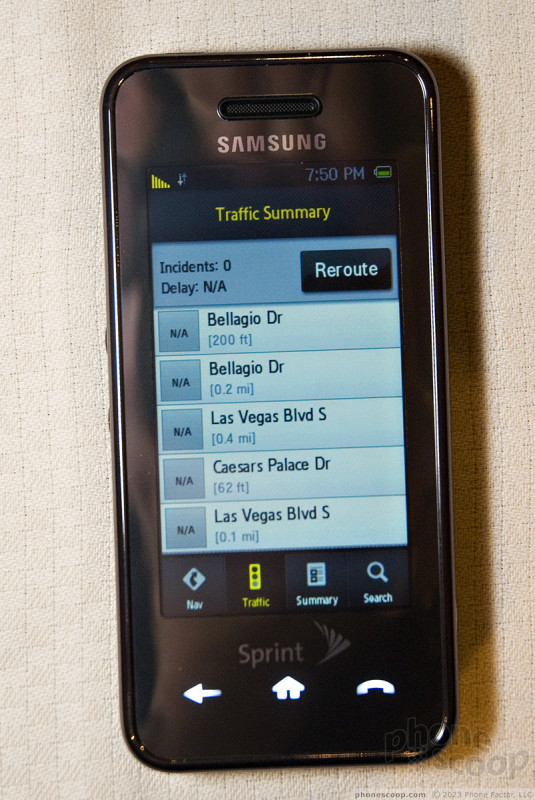















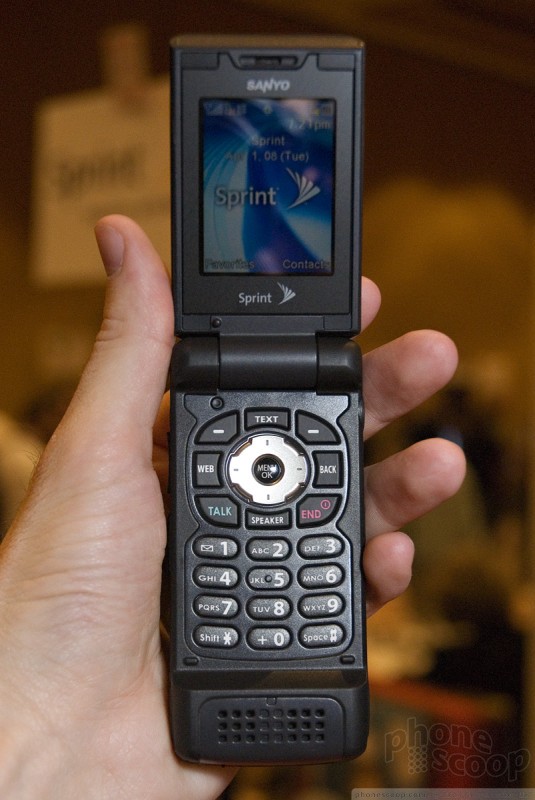








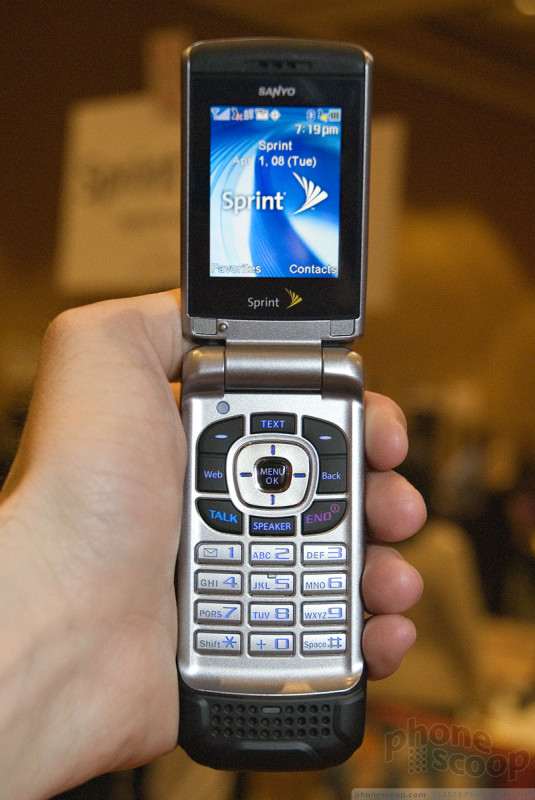






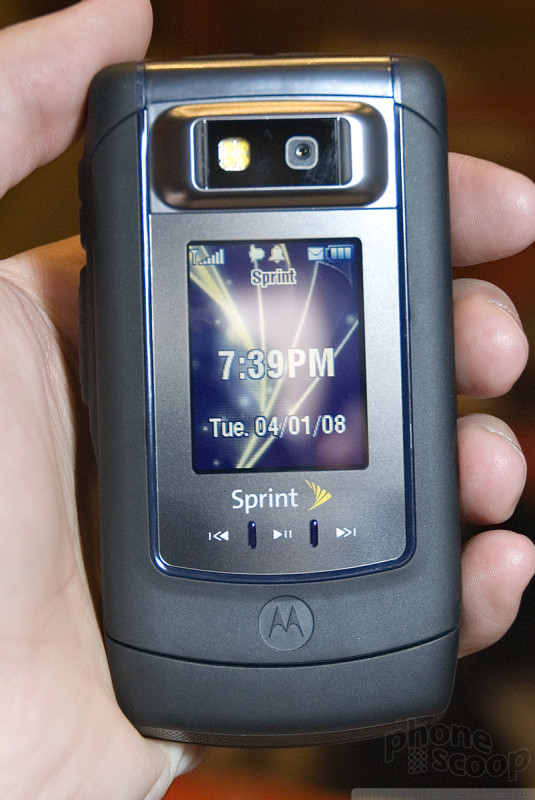










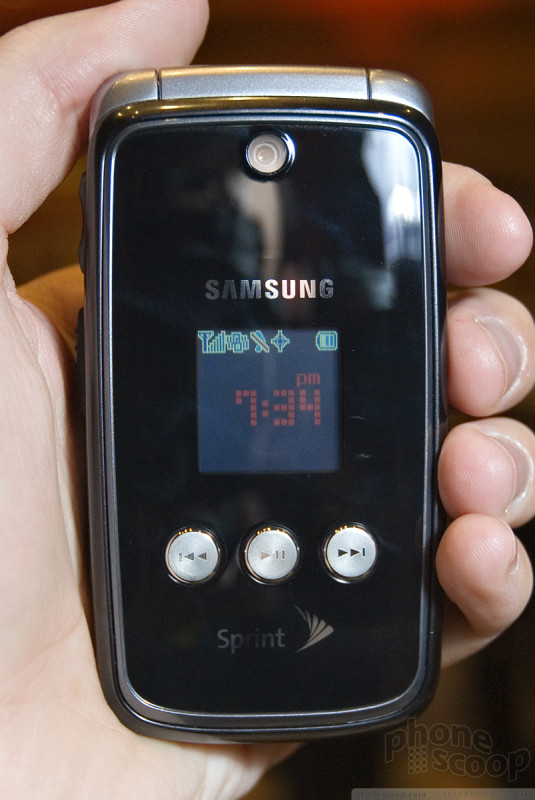









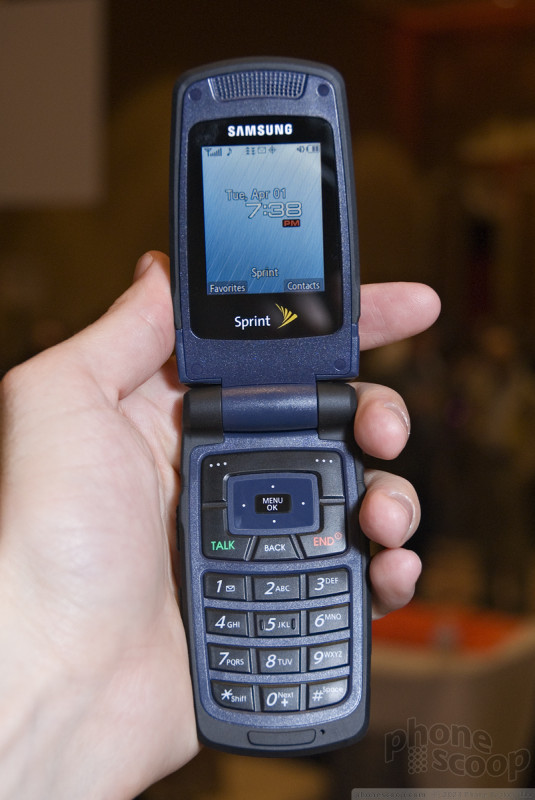








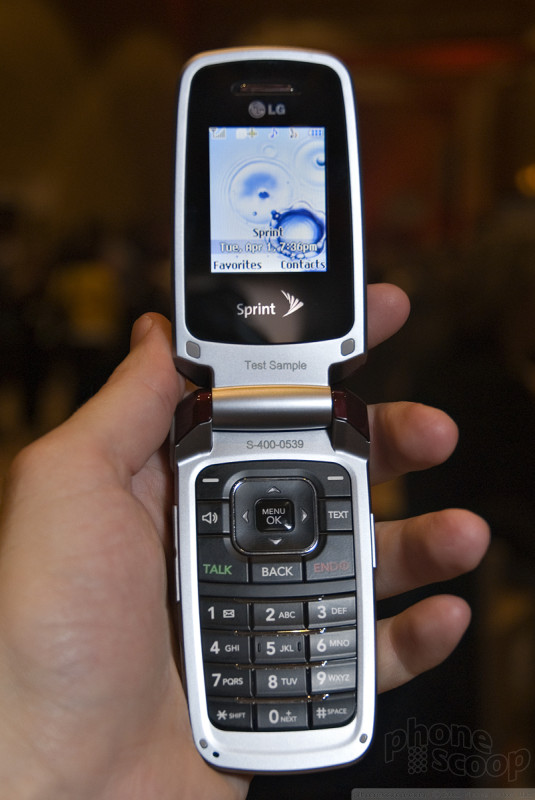



















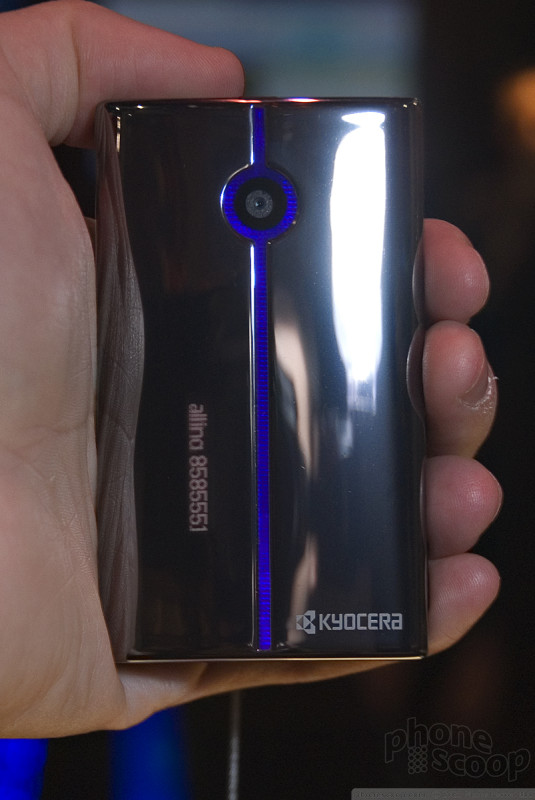







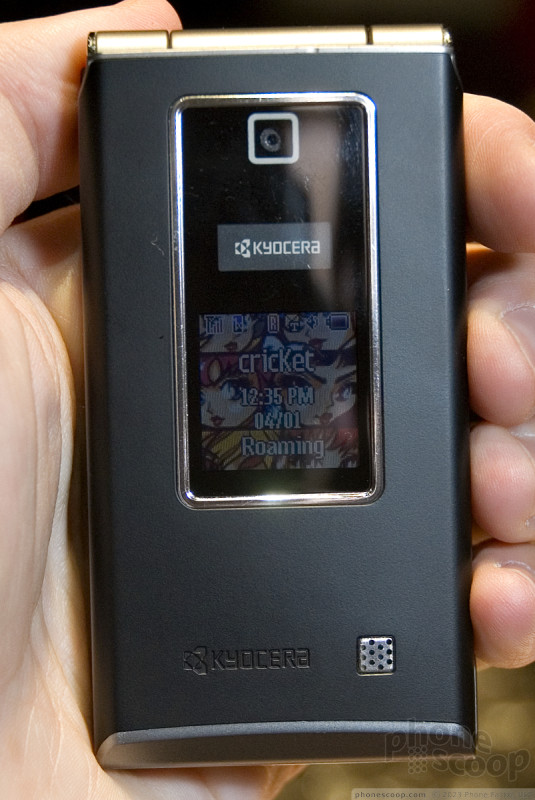







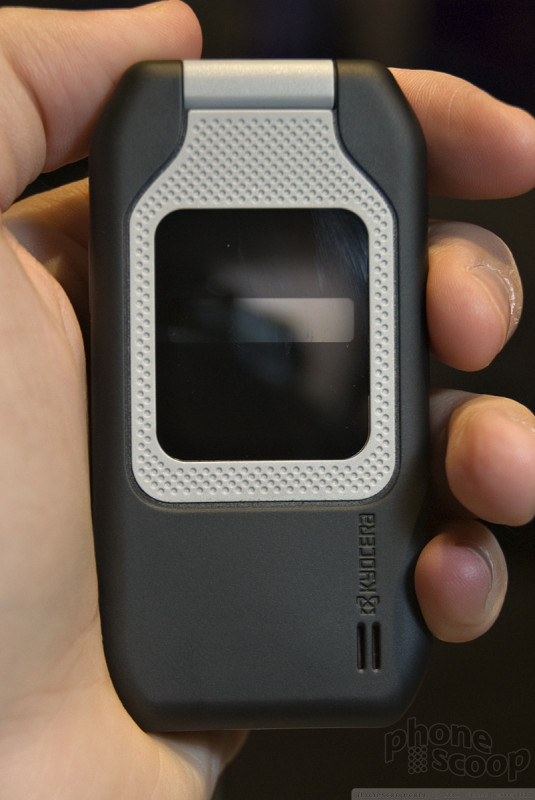







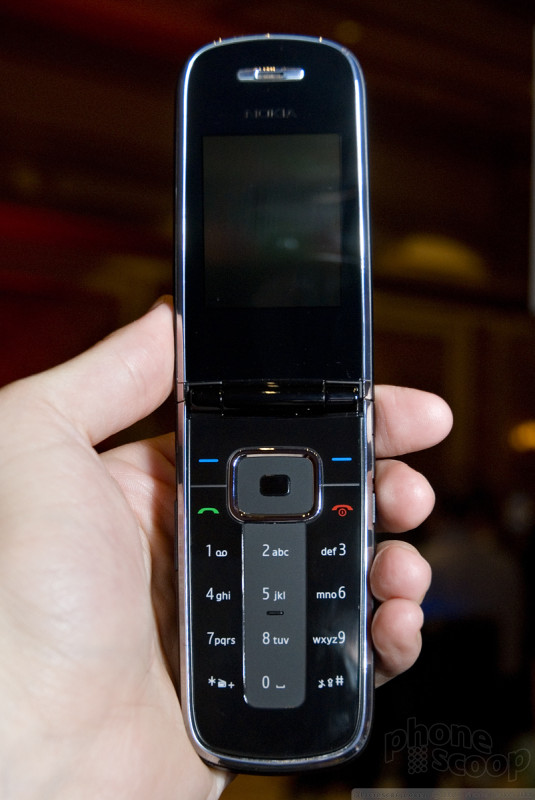









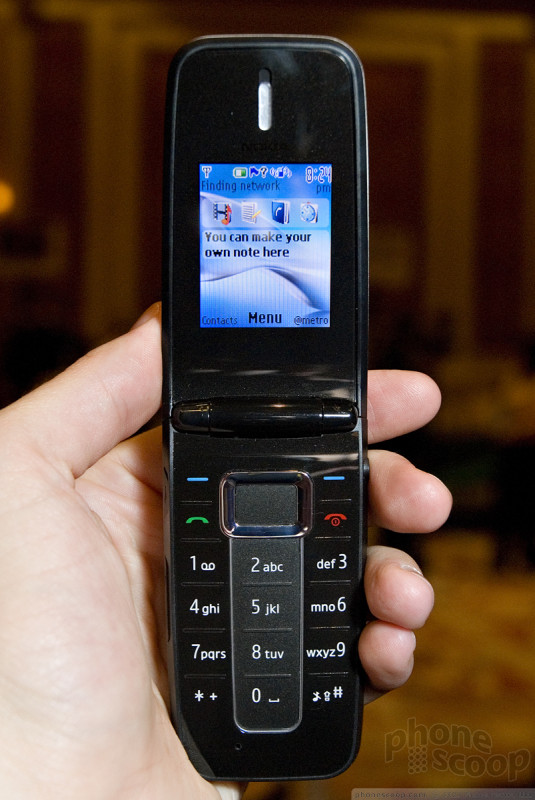









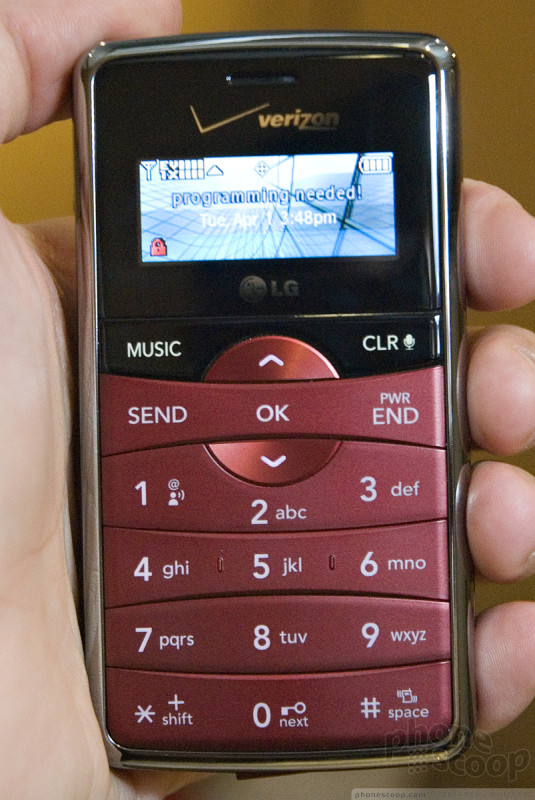















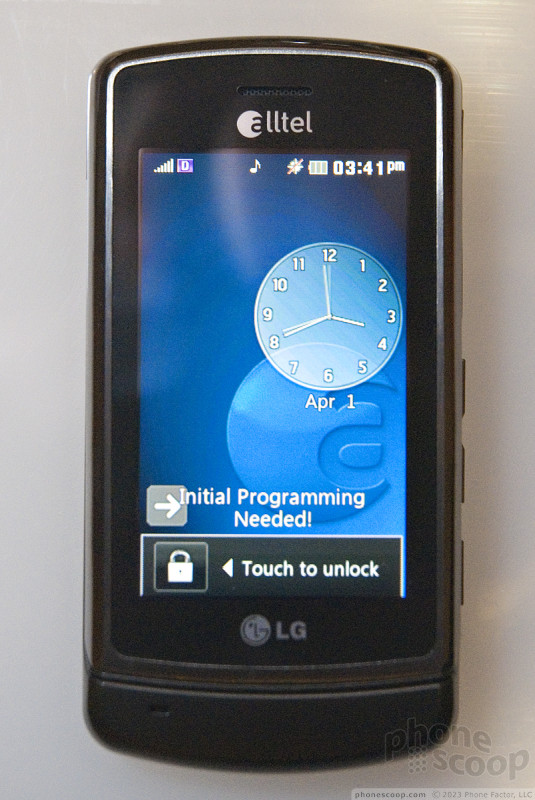














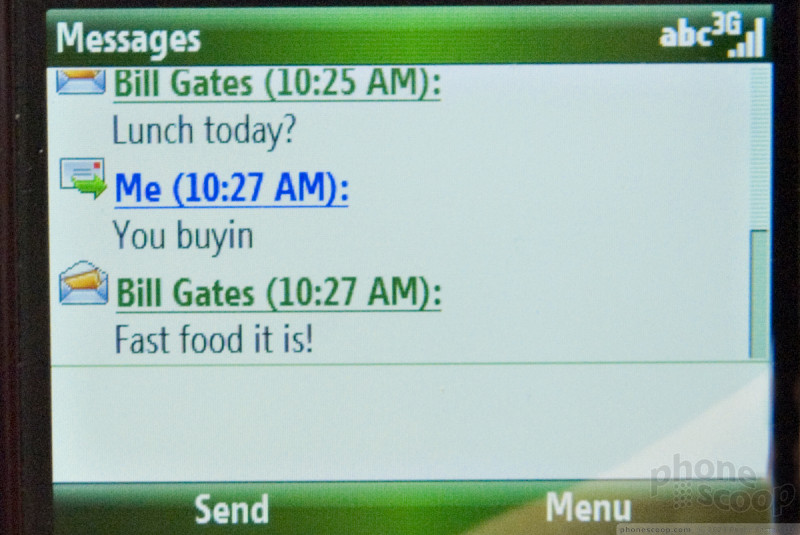















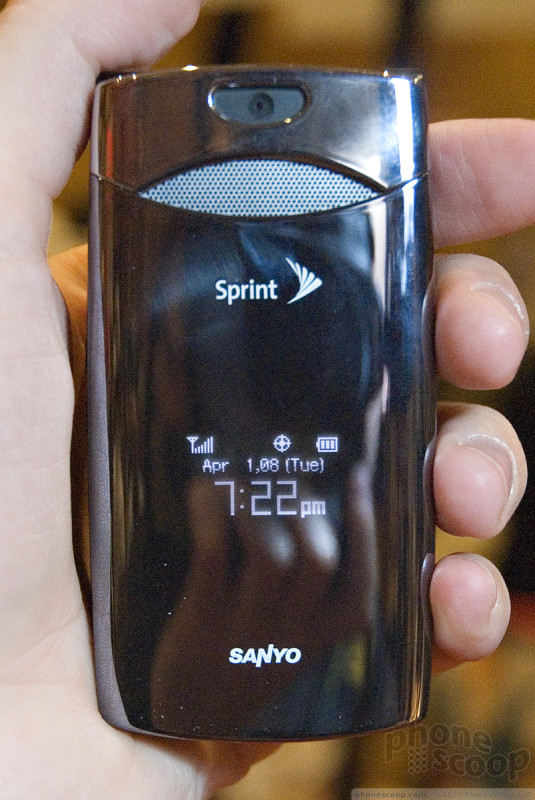







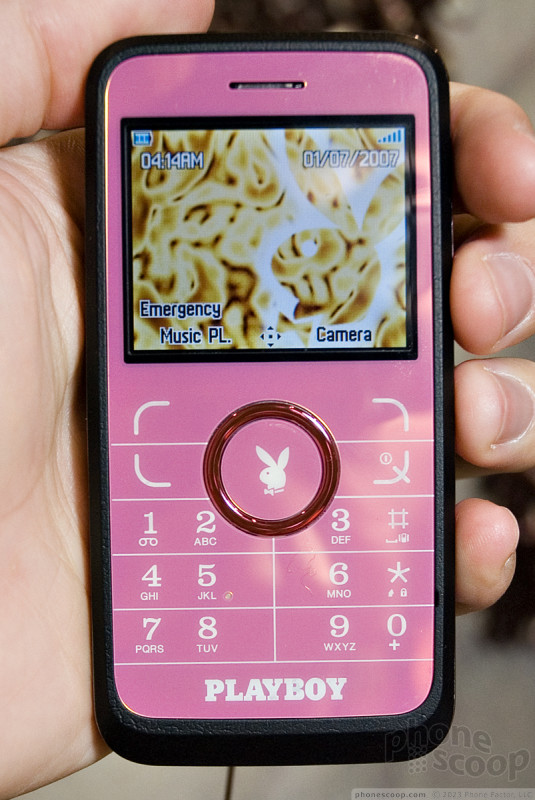


















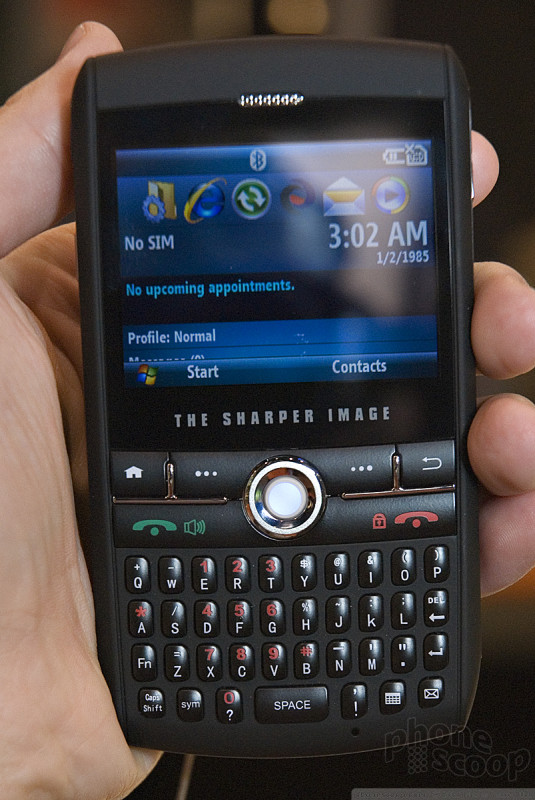







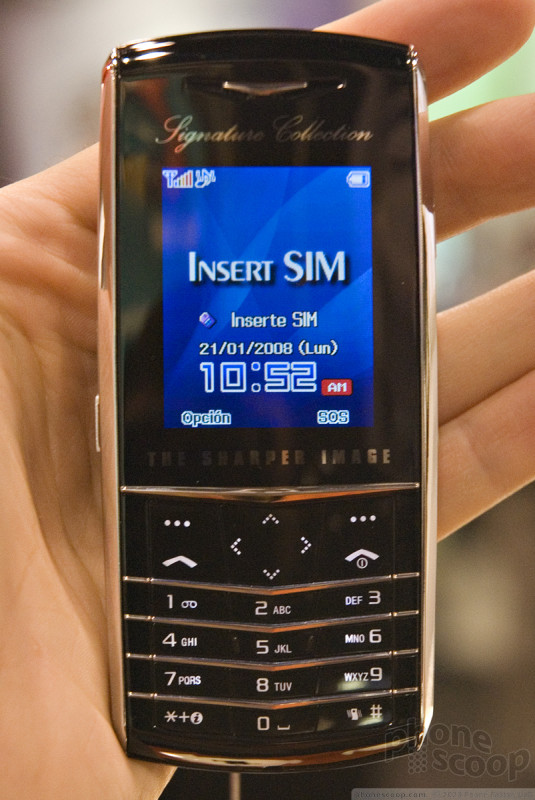








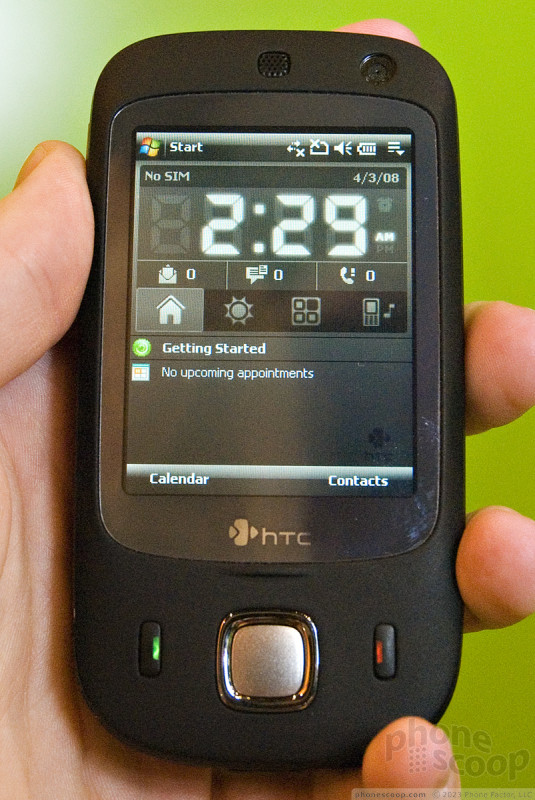





















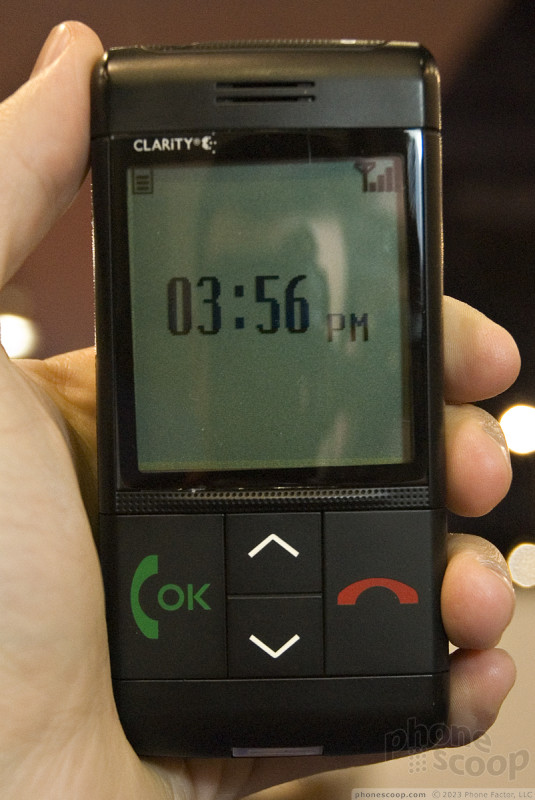














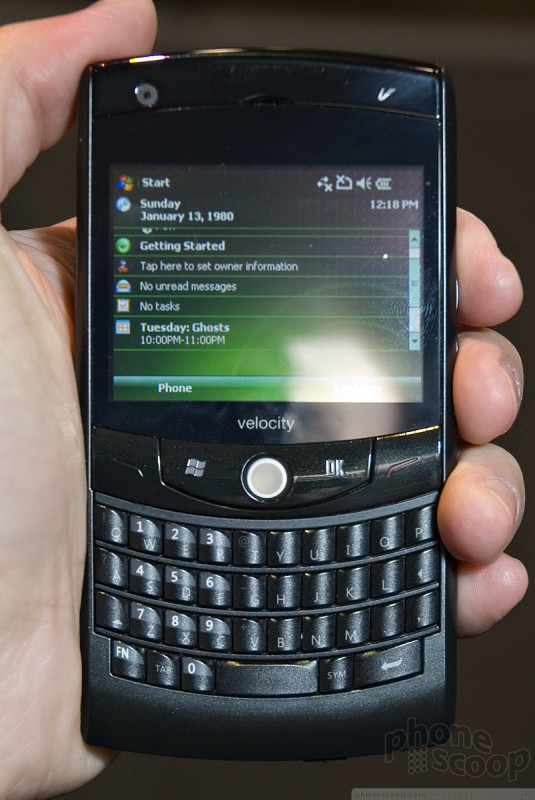










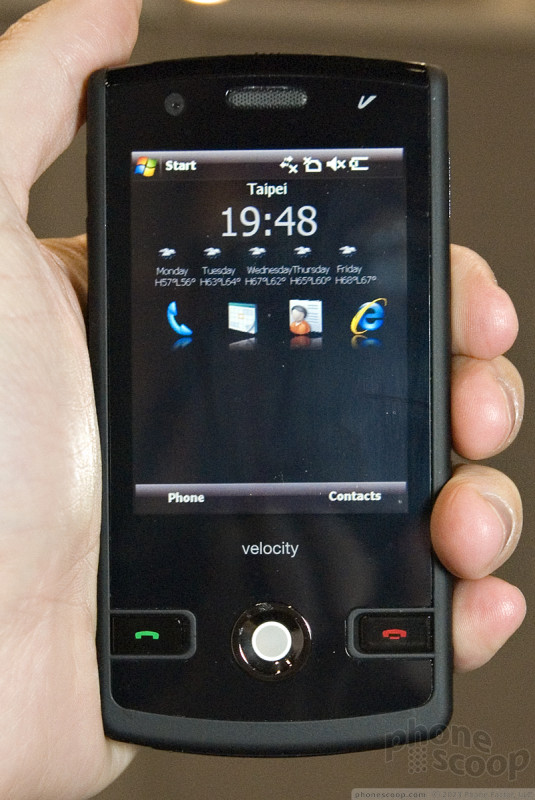










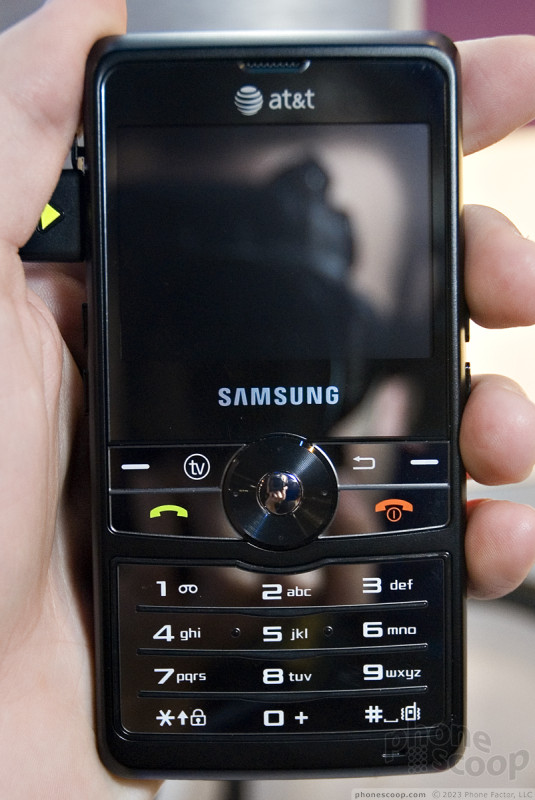












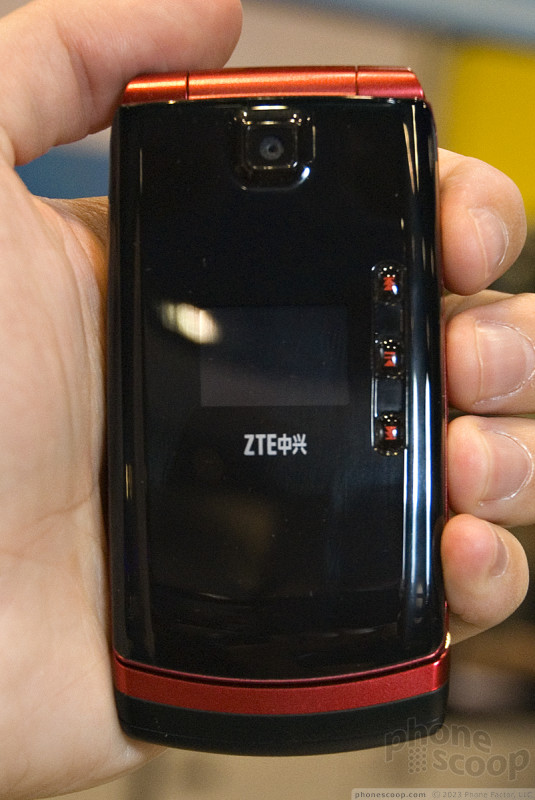







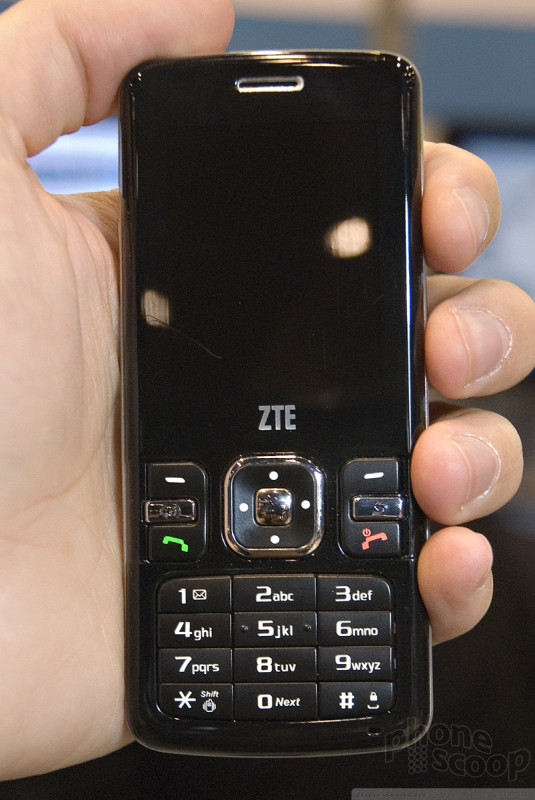





















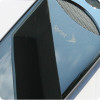 Video Review: Sanyo Katana LX
Video Review: Sanyo Katana LX
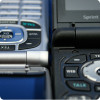 Video Tour: QChat DirectConnect
Video Tour: QChat DirectConnect
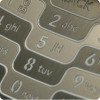 Review: LG Glimmer
Review: LG Glimmer
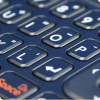 Review: LG enV2
Review: LG enV2
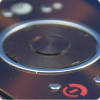 Review: Motorola Z9
Review: Motorola Z9
 LG Vu / CU920 / CU915
LG Vu / CU920 / CU915
 Motorola Z9
Motorola Z9
 LG Glimmer / UX-830 / Vantage / Spyder
LG Glimmer / UX-830 / Vantage / Spyder

